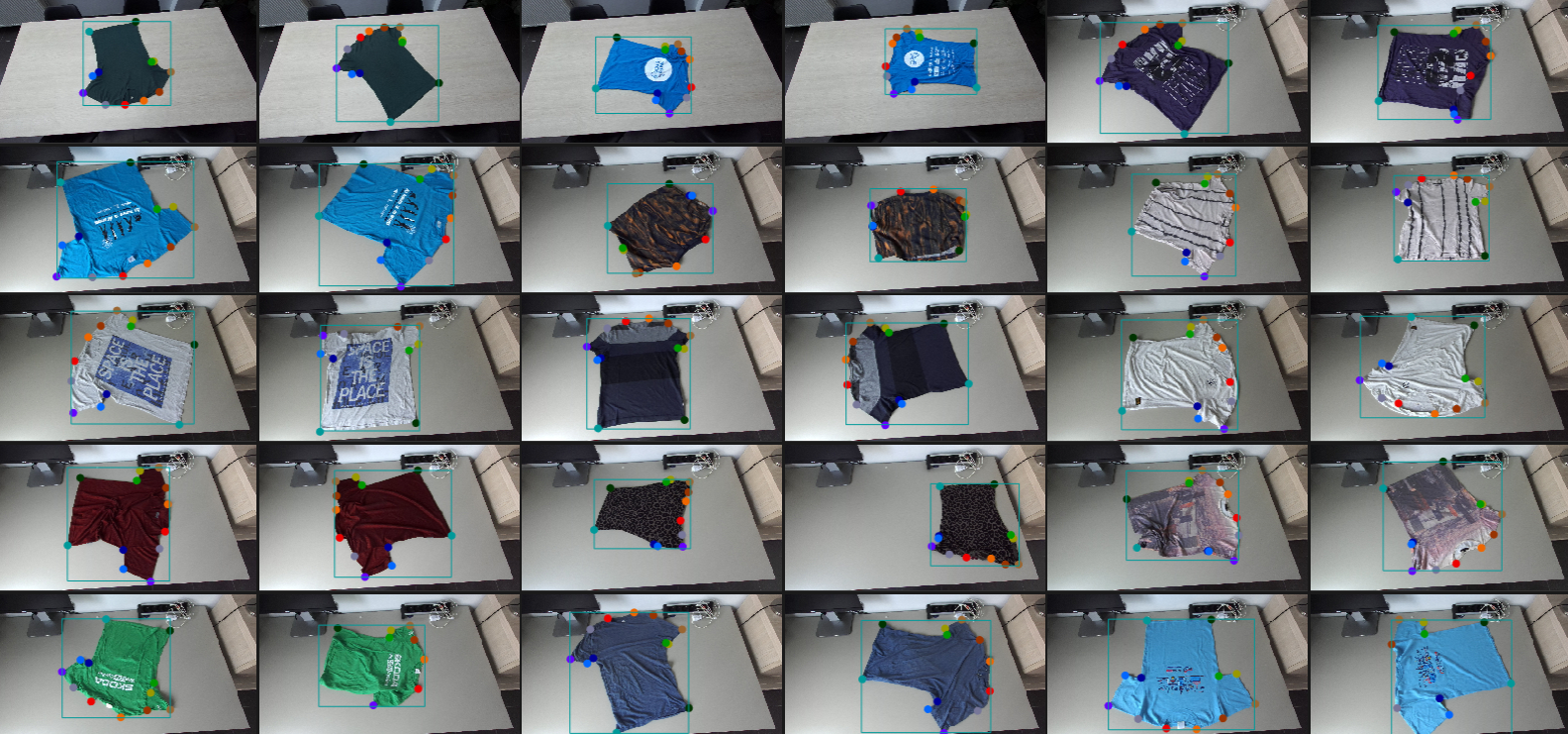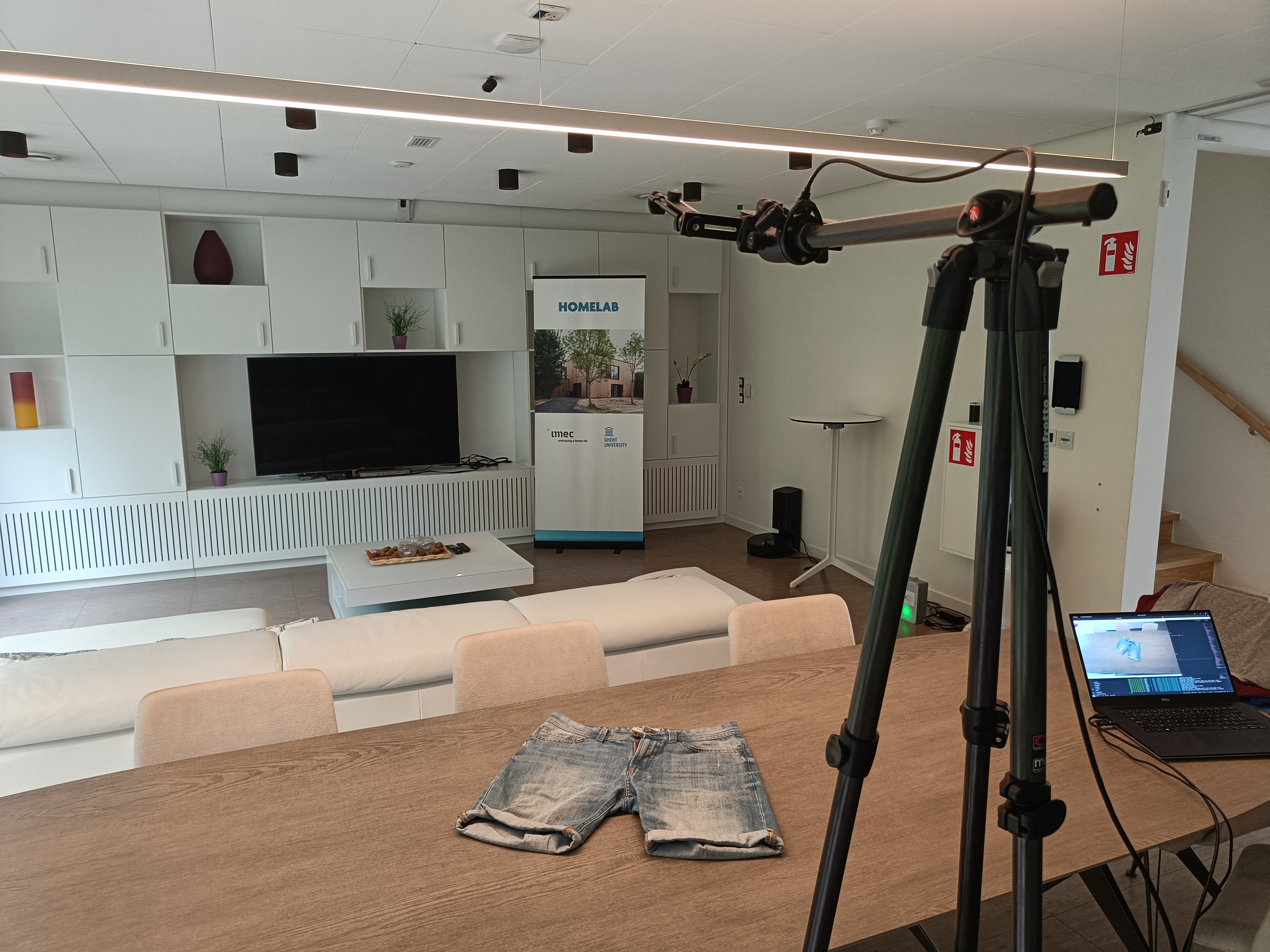The aRTF (almost-ready-to-fold) Clothes dataset contains around 2000 images of various clothing items across 4 categories, in a variety of realistic (where a human/robot might do laundry folding) household settings.
The almost-ready-to-fold part refers to the states of the clothes. We mimick the output of current SOTA robotic unfolding pipelines, which are capable but not yet perfect.
The aim of this dataset is to evaluate perception modules on a variety of cloth pieces for each category in a number of realistic environments. We hope this will help bring robots out of the labs into our everyday living environments.
The table below summarizes the dataset. Note that the scenes and cloth items for the train and test split are completely distinct to measure generalization across scenes and cloth items.
| Category | # Scenes | # Cloth items | #images | |||
|---|---|---|---|---|---|---|
| . | train | test | train | test | train | test |
| Tshirt | 6 | 8 | 15 | 20 | 210 | 400 |
| Towel | 6 | 8 | 15 | 20 | 210 | 400 |
| Shorts | 6 | 8 | 8 | 9 | 112 | 180 |
| Boxershorts | 6 | 8 | 11 | 11 | 154 | 220 |
| Total | 6 | 8 | 49 | 60 | 686 | 1200 |
Some additional examples taken from the tshirt test split:

You can get the full RGB dataset with COCO-formatted annotations here (7GB).
The resized splits used in the paper associated with the dataset can be found here.
All data is also available on Zenodo.
The dataset is CC-BY 4.0 licensed. The codebase is MIT Licensed.
If you use this dataset, please cite it by refering to the accompanying paper:
@misc{lips2024learning,
title={Learning Keypoints for Robotic Cloth Manipulation using Synthetic Data},
author={Thomas Lips and Victor-Louis De Gusseme and Francis wyffels},
year={2024},
eprint={2401.01734},
archivePrefix={arXiv},
primaryClass={cs.CV}
}We used a Zed2i camera and smartphone. Example scene is given below:

CVAT was used for labeling. We set up CVAT locally and also used the serverless components to enable Segment-Anything, which we used for labeling segmentation masks of all cloth items. Keypoints were all manually labeled.
The semantic keypoints we have labeled are illustrated below: TODO: template + semantic labels for each category.
Make sure to download the dataset to the data folder in this repo first.
- clone this repo (with submodules)
- create the conda environment
conda env create -f environment.yaml-(initialize the pre-commit hookspre-commit install)
To create COCO keypoints datasets, we use the airo-dataset-tools package and take the following steps:
-
Export the dataset annotations from cvat in their image format and save the file in the parent directory of the dataset images
-
create a coco categories file that describes the semantic classes, using the
scripts/create_coco_categories.pyscript. -
Convert the cvat file to COCO format using
airo-dataset-tools convert-cvat-to-coco-keypoints --coco_categories <coco-categories-file> --add_segmentation <path-to-cvat-xml> -
(if needed) change the relative base of the image paths to match your coco dataset structure.
-
inspect the dataset and annotations with Fiftyone to make sure all looks fine:
airo-dataset-tools fiftyone-coco-viewer <path-to-coco-json> -l keypoints -l segmentations -l detections
A number of steps are bundled in this script.
To facilite rapid iterations, you can resize the images: airo-dataset-tools resize-coco-keypoints-dataset --width 256 --height 256 <path-to-coco-json>
